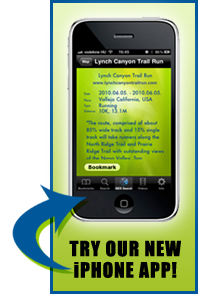I have been snowshoeing for several years and just like the growth trend in all endurance activities (running, biking, triathlons,) snowshoeing is booming. It continues to receive a lot of press by all the various magazine and internet sources. There are significant benefits to enhance overall body fitness and strength to complement your cycling and running.
Considerations for selecting a running snowshoe
1. Look for a lightweight snowshoe that offers stability (check the racer models)
2. Consider a snowshoe comparable for all conditions (heavy powder – breaking trail and hard pack/ice trails)
3. If possible test a few of the different models at a resort that offers snowshoes – also many of the snowshoe races allow model testing
4. Here are a few companies to check out their racing snowshoes (there are plenty of others):
a. Havlick Snowshoe Company (personally I love their snowshoes) www.havlicksnowshoe.com
b. Dion Snowshoes (I use their racing snowshoe for hardpack races) www.dionsnowshoes.com
c. Redfeather – www.redfeather.com
d. Atlas – www.atlassnowshoe.com
e. Crescent Moon Snowshoes – www.crescentmoonsnowshoes.com
f. Northern Lites - www.nothernlites.com
g. Tubbs Snowshoes - www.tubbssnowshoes.com
h. TSL Outdoors – www.tsloutdoor.com
I find that snowshoeing in heavy powder complements cycling and running as it uses the quads and lower abdominals to drive the legs through the snow. If the conditions are hard packed powder or ice/granular your running pace will increase because of the lack of resistance compared to heavy powder. Depending on conditions snowshoes may provide better overall traction without the slippage that sometimes occurs with the various types of running cleat systems (Yaktrax, Stableicers, or screws attached to the bottom of running shoes). An idea for a tougher workout is to add the use of poles for an overall upper/lower body workout. If you are using a heart rate monitor the increase in overall average heart rate can be dramatic especially with the addition of poles. Personally, my heart rate average for a longer (2 hours or more) snowshoe will be about 25% higher than without poles. The legs will feel heavy the first few times out in the powder but like all the other sports, gradually you will get the heart rate under control especially when running hills. You may want to consider using poles to replicate your hard running (interval) workout and for a more aerobic heart rate zone eliminate the poles. Snowshoe in the evening with a headlamp on trails is just priceless!
A good tip is to shorten the running stride similar to trail running. When running downhill’s focus landing with a midfoot strike (which will come more naturally than normal running) and it will allow the cleats to dig into the snow and will enable you to fly on the downhills. Downhill snowshoe running is a blast and provides a good complement to the “time gaining” advantage of downhill trail running. As many of us know with trail running races, it’s so important to learn how to run the downhill’s hard later into a race when the quads are crushed. It’s a great way to gain time against other competitors. Also, snowshoeing provides a great complement without the same impact of running hard dirt trails because of the benefits of the fluffy snow.
Looking for a challenge, try a snowshoe race and here are a few websites to check out for races and calendars:
1. www.peak.com (great tough snowshoe marathon!)
2. www.runwmac.com (snowshoe race series)
3. www.snowshoeracing.com (calendar)
4. www.perkinstownsnowshoerace.com
5. www.fingerlakesrunners.org/races/forms/Snowshoe.html
6. www.snowshoemag.com (calendar)
2 Sample Workout’s
1. Hard 1 Hour Workout (use poles)
10 minutes warm-up
Set 1 – 4 sets of (4 minutes with a quick turnover at hard pace – 80% HR threshold pace), recover with slow jog for 2 minutes on a rolling or level area
Set 2 – find a short steep hill 5 repeats at 90% HR threshold and these are tough especially with poles and drive hard for the last part of the hill, recovery run down the hill. Take a full 100% recovery – for example if it takes 3 minutes to climb the hill then take 3 minutes recovery descending)
Run at aerobic pace for 5 -10 minutes
Set 3 – use the same hill in set 2 or another steep hill and do 5 repeats of hard running down the hill and focus on “falling forward” and lean down the hill to increase pace. Make sure to push off the poles. These should be hard. Walk up the hill easy after each set.
Recovery run 10 – 15 minutes
2. Long Snowshoe Workout (no poles)
The goal would be 2+ hours. As I mentioned, running with snowshoes requires more effort as compared to a regular trail run on dirt so start off easy especially if the course includes a significant amount of climbing.
The first hour focus on keeping the heart rate and effort in the aerobic zone 70-75% of threshold (it will be very hard to keep it low – add some power walking if necessary)
Second hour – every hill including small rises push hard and then get right back into the easy aerobic zone
Third hour and/or longer – keep the heart rate zone in aerobic range but increase pace so that the overall workout ends with a negative split. The legs and lungs will definitely feel tired and the key is to mentally focus on finishing strong (that’s why it’s so important to start at a reasonable pace!)
This workout is very hard mentally and physically so make sure you carry plenty of nutrition/drinks. My overall calorie burn is normally 40% vs. just running on dirt trails over the same course (and it will take significantly longer).
Snowshoeing is a lot of fun, challenging and provides numerous cross-training benefits. Think about adding it to your off-season and try a snowshoe race this year!
Subscribe to:
Post Comments (Atom)






No comments:
Post a Comment